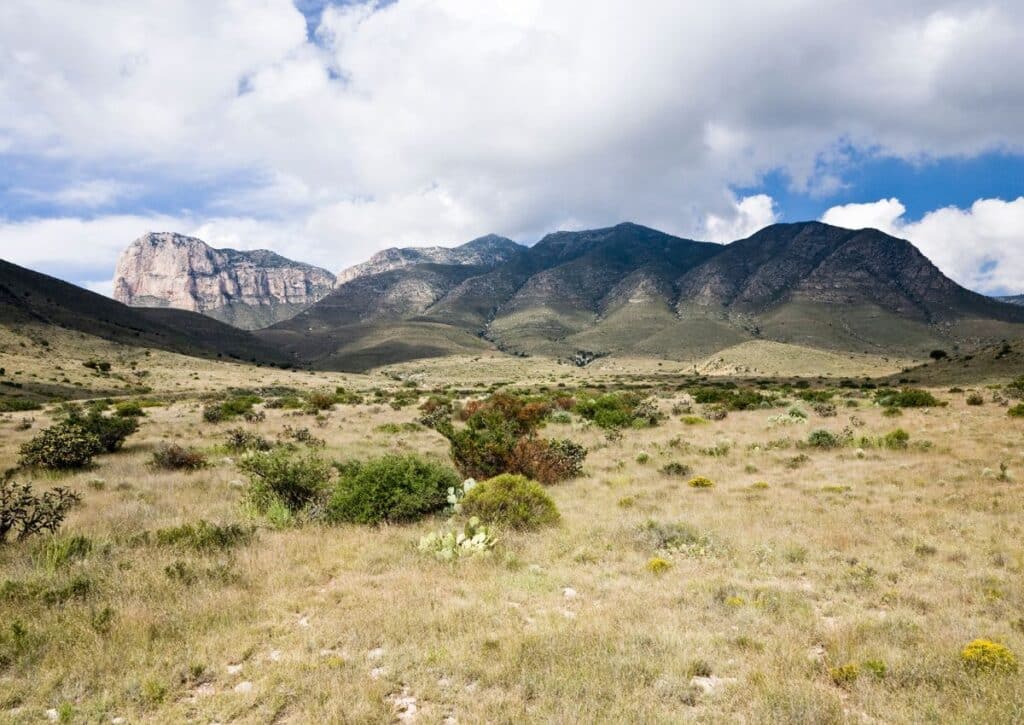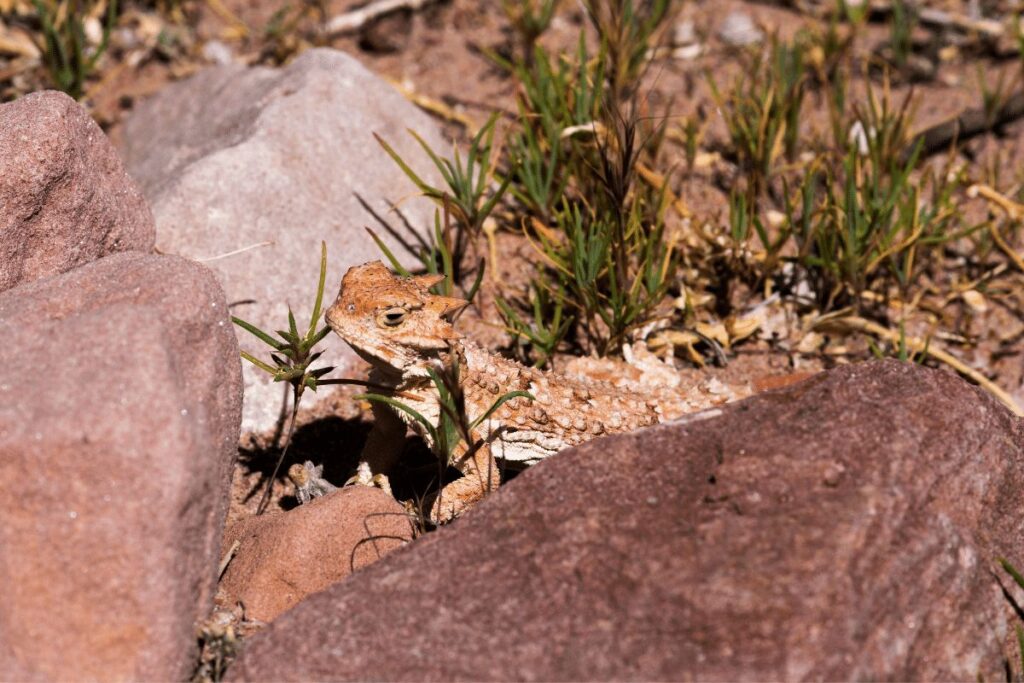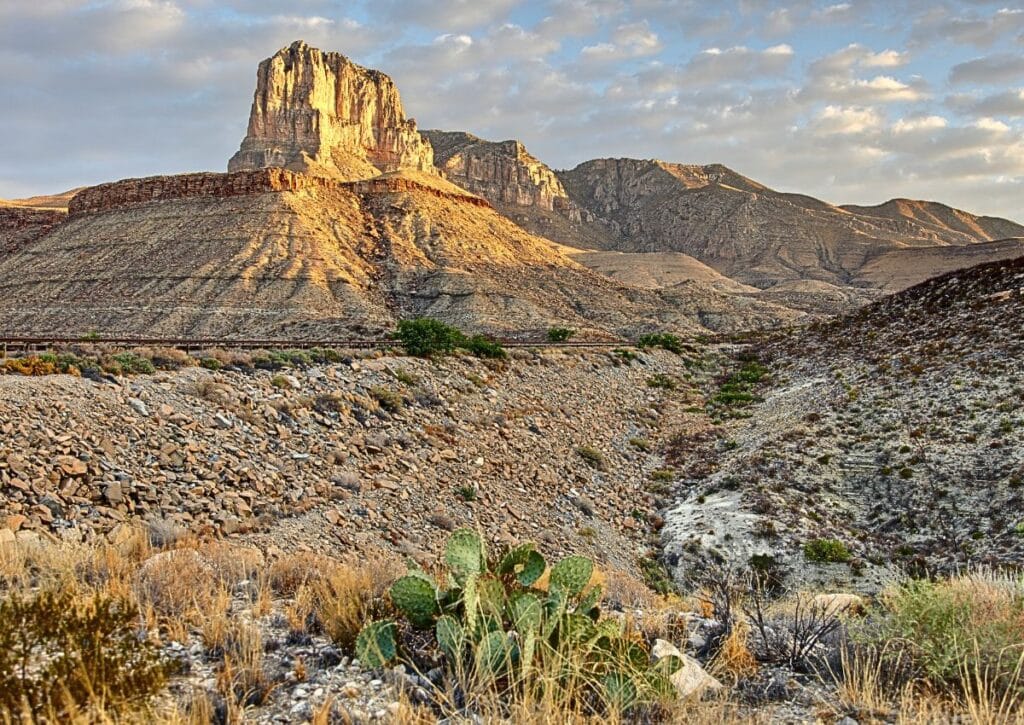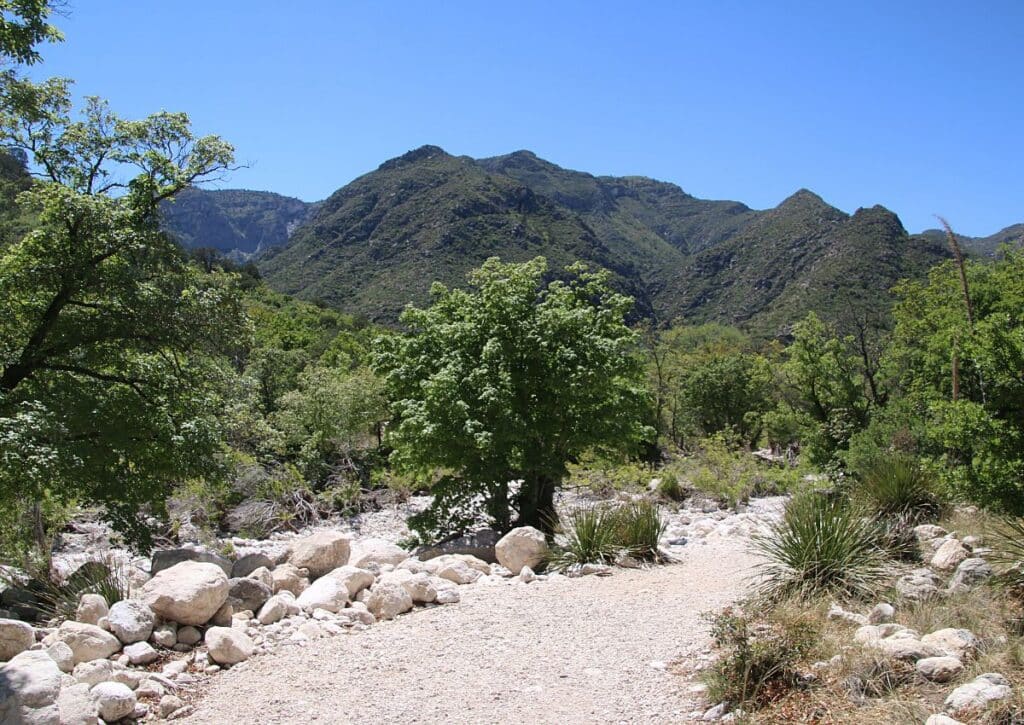Embark on backcountry adventures in Guadalupe Mountains National Park with our guide to trails, camping, and gear."
Guadalupe Mountains National Park, located in West Texas, is a vast expanse of over 86,000 acres, filled with diverse landscapes from deep canyons to towering peaks.
For many, it’s a quick stop to snap a photo or a brief hike to stretch the legs. But for those with a thirst for adventure, the park’s backcountry is where the real magic happens.
Backcountry exploration isn’t just about getting off the beaten path; it’s about immersing oneself in the raw beauty of nature, challenging oneself, and experiencing the park in its purest form.
If you’re ready to dive deeper into what the Guadalupe Mountains have to offer, you’re in for a treat. Let’s get started.
Understanding the Terrain
Guadalupe Mountains National Park is a geological marvel. At its core, it’s home to one of the world’s most well-preserved fossil reefs from the Permian Era, giving insight into a time when a vast sea covered the region.
This ancient seabed has since been uplifted, resulting in the park’s prominent limestone peaks, including the renowned Guadalupe Peak, Texas’ highest point.
The park’s terrain is a blend of ecosystems. From the semi-arid lowlands, you’ll find Chihuahuan Desert flora, like yuccas and agaves, adapting to the harsh conditions.
As you ascend, the environment shifts to lush woodlands in places like McKittrick Canyon, renowned for its vibrant fall foliage.
These ecosystems aren’t just diverse; they’re vital habitats for a range of wildlife, from mule deer to over 200 species of birds. Understanding this terrain is key for any explorer, as it not only ensures a safer journey but also enriches the experience, offering a deeper appreciation for the park’s natural wonders.
Top Backcountry Trails for the Intrepid Explorer in Guadalupe Mountains National Park
For those eager to delve deep into the untouched beauty of the Guadalupe Mountains, the park offers a range of trails that promise both challenge and reward.
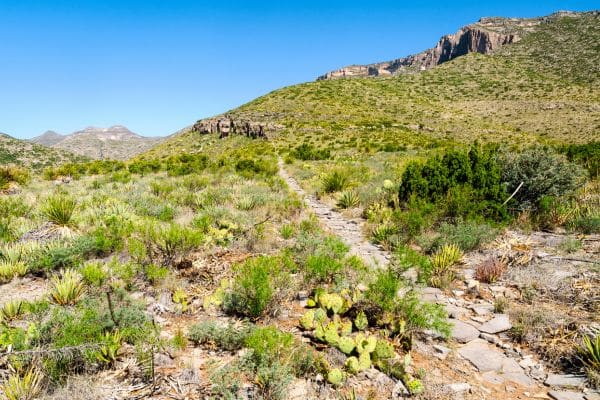
Each path unveils a unique facet of the park’s diverse landscape, ensuring that every journey is a memorable one.
Devil’s Hall Trail
Nestled within the heart of the Guadalupe Mountains National Park, the Devil’s Hall Trail offers a moderate hike that stretches for about 4.2 miles round trip. This trail is a favorite among those who are keen to experience the park’s geological wonders without committing to a strenuous climb.
As you navigate the path, you’ll be met with a natural staircase formed by the rugged terrain, a feature that adds a touch of challenge but is immensely rewarding.
The highlight of this trail is the eponymous Devil’s Hall, a narrow passage between towering rock walls. It’s a sight that feels both humbling and awe-inspiring, reminding hikers of the raw power of nature’s forces over millennia.
Along the way, keep an eye out for the unique flora and fauna that call this region home. From the resilient cacti to the occasional sighting of local wildlife, there’s always something to marvel at.
McKittrick Canyon Trail
McKittrick Canyon Trail is a testament to the park’s ecological diversity. Spanning approximately 4.8 miles one way, this trail is of moderate difficulty, making it accessible to hikers of varying skill levels.
The trailhead is located to the northeast of the park, and as you embark on this journey, you’ll quickly realize why many tout it as one of the most beautiful trails in the entire park.
The real magic of McKittrick Canyon comes alive in the fall. As the seasons change, the canyon bursts into a riot of colors, with the foliage turning brilliant shades of red, orange, and gold.
This vibrant display contrasts beautifully with the stark desert surroundings, creating a spectacle that attracts photographers and nature lovers alike.
But beyond its autumnal beauty, the trail offers serene stream crossings, limestone cliffs, and the remnants of a historic cabin, adding layers to your hiking experience.
Guadalupe Peak Trail
For those seeking the pinnacle of hiking experiences in the park, the Guadalupe Peak Trail is a must-try. This challenging hike stretches for 8.4 miles round trip and is not for the faint-hearted.
Starting at the Pine Springs Trailhead, the path winds its way upwards, with an elevation gain of over 3,000 feet. But with every step, the views become more breathtaking, making the exertion worthwhile.
Reaching the summit of Guadalupe Peak, you’ll be standing at the highest point in Texas, at an elevation of 8,749 feet. The panoramic vistas from the top are unparalleled, offering a bird’s-eye view of the surrounding desert, the distant salt flats, and the vast expanse of the park.
There’s a profound sense of accomplishment that comes with reaching this peak, a feeling that’s only heightened by the stunning backdrop. And as a bonus, at the summit, there’s a stainless-steel pyramid placed by American Airlines in 1958 to commemorate the 100th anniversary of the Butterfield Overland Mail, a stagecoach route that passed below.
Salt Basin Dunes
Away from the towering peaks and deep canyons, the Salt Basin Dunes offer a completely different hiking experience. Located on the western edge of the park, this trail covers a round trip of about 10 miles, with a relatively flat terrain making it moderately challenging.
The trail takes you through a vast expanse of white gypsum dunes, a surreal landscape that feels worlds away from the typical mountainous terrains of the park.
The dunes, which can reach heights of up to 60 feet, are a testament to the dynamic geological processes at play. Formed by the evaporation of ancient seas and shaped by the relentless winds, they stand as a stark reminder of the region’s ever-changing nature.
Hiking here, especially during the golden hours of sunrise or sunset, is a mesmerizing experience. The play of light and shadow over the undulating dunes creates a dreamscape, making it a favorite spot for both contemplation and photography.
Backcountry Camping in Guadalupe Mountains National Park
The allure of Guadalupe Mountains National Park isn’t just in its trails and peaks, but also in the opportunity it offers for immersive backcountry camping.
Away from the crowds, backcountry camping allows adventurers to truly connect with the park’s pristine wilderness. Here’s what you need to know to make the most of your backcountry experience.
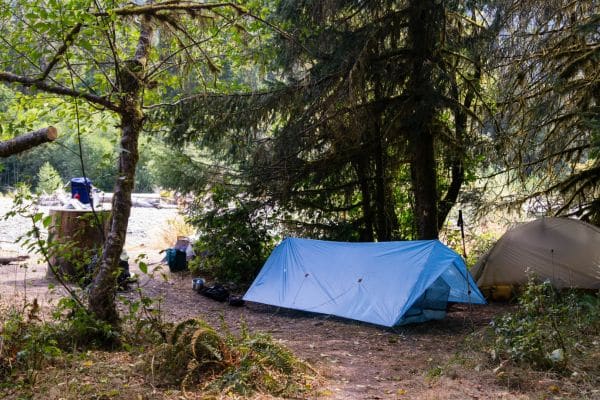
Camping Locations: Several areas within the park are designated for backcountry camping, ensuring that campers can find a spot that suits their preferences and experience level.
- Pine Springs: This area offers both tent and RV camping, serving as a base for those looking to explore the nearby trails, including the Guadalupe Peak Trail.
- Dog Canyon: Located on the north side of the park, Dog Canyon offers a cooler, more secluded camping experience. It’s an ideal spot for those looking to escape the Texas heat and explore the surrounding canyons.
- Wilderness Ridge: For those seeking higher altitudes, Wilderness Ridge provides campsites that are both remote and elevated, offering stunning views of the surrounding landscape.
- McKittrick Ridge: This is another high-altitude option, providing a peaceful camping experience with panoramic vistas of the park.
Permits: Backcountry camping in the Guadalupe Mountains National Park requires a permit. These permits are essential as they help the park manage visitor numbers and minimize environmental impact. You can obtain a permit at the Pine Springs Visitor Center or the Dog Canyon Ranger Station. It’s advisable to get your permit well in advance, especially during peak seasons, as there’s a limit to the number of campers allowed in the backcountry each night.
Leave No Trace Principles: Preserving the beauty and integrity of the Guadalupe Mountains is a collective responsibility. Adhering to the Leave No Trace principles ensures that the park remains unspoiled for future generations.
- Plan Ahead and Prepare: Understand the regulations of the park, check the weather, and ensure you have the right equipment.
- Travel and Camp on Durable Surfaces: Stick to designated trails and campsites to minimize impact.
- Dispose of Waste Properly: Pack out everything you pack in. This includes all trash, leftover food, and litter.
- Leave What You Find: Preserve the environment by not picking plants, disturbing wildlife, or removing rocks.
- Minimize Campfire Impact: Use a camp stove for cooking instead of making a fire. If fires are permitted, use established fire rings.
- Respect Wildlife: Observe animals from a distance. Do not feed or approach them.
- Be Considerate of Other Visitors: Keep noise levels down and yield the trail to others.
Tips for a Safe and Enjoyable Experience:
- Wildlife: The park is home to a variety of wildlife, including black bears and mountain lions. While encounters are rare, it’s essential to be prepared. Store food and scented items in bear-proof containers and make noise while hiking to alert animals to your presence. If you do encounter a large animal, speak calmly and firmly, avoid direct eye contact, and slowly back away.
- Weather: The weather in the Guadalupe Mountains can be unpredictable. Afternoons can get scorching, while nights can be chilly, especially at higher altitudes. It’s crucial to pack layers and be prepared for sudden weather changes. Additionally, flash floods can occur in the canyons, so always check the weather forecast before heading out.
- Water: Water sources in the park are scarce, and many are not reliable year-round. Always carry enough water for your trip, and consider bringing a water purification system if you plan to refill from natural sources.
- Navigation: While the park’s trails are well-marked, it’s always a good idea to carry a map and compass or a GPS device. This is especially important if you plan to venture off the main trails.
Backcountry camping in the Guadalupe Mountains National Park offers an unparalleled opportunity to immerse oneself in nature’s beauty. With the right preparation and respect for the environment, it’s an experience that promises memories that will last a lifetime.
Backcountry Wildlife Sightings in Guadalupe Mountains National Park
For wildlife enthusiasts, the Guadalupe Mountains National Park is nothing short of a treasure trove. The park’s diverse ecosystems, ranging from arid desert lowlands to lush high-altitude woodlands, provide habitats for a myriad of species.
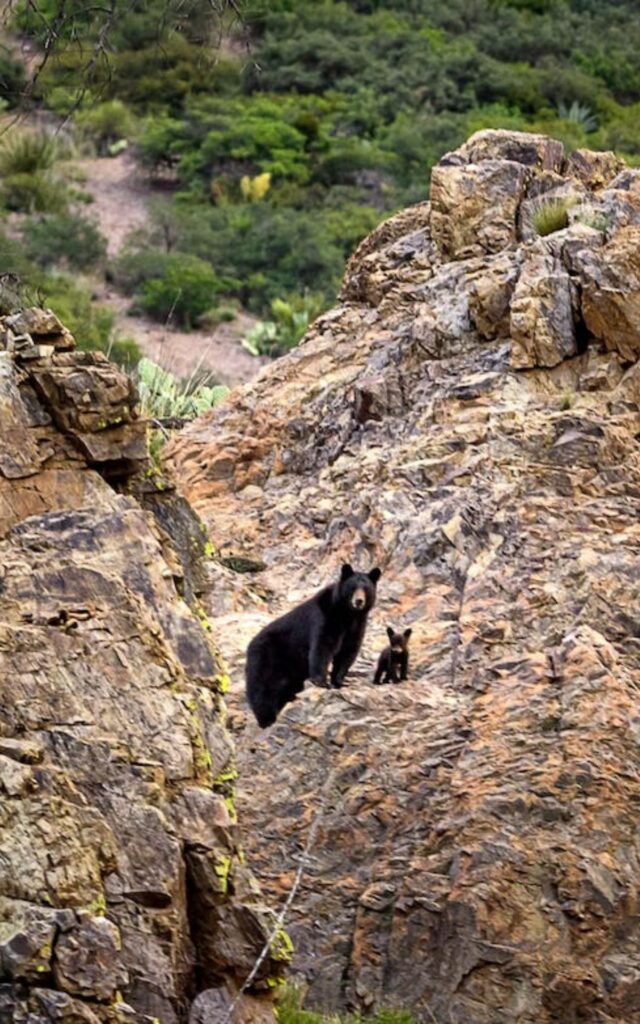
Venturing into the backcountry, away from the more frequented areas, increases the chances of encountering these creatures in their natural habitats.
Mammals:
The park is home to several mammalian species that roam its vast expanses. Black bears, once extirpated from West Texas, have made a comeback in the Guadalupes. While sightings are rare, the thrill of spotting one in the wild is unparalleled.
Mountain lions, too, prowl the park’s rugged terrains, though they are elusive and tend to avoid human encounters. Smaller mammals like the ringtail cat, rock squirrels, and mule deer are more commonly seen and offer delightful viewing opportunities.
Birds:
Birdwatchers will find the park a haven, with over 200 species recorded. The varied terrains attract both resident and migratory species.
Golden eagles and red-tailed hawks soar majestically over the peaks, while the woodlands echo with the calls of the acorn woodpecker and the mountain chickadee.
During migration seasons, the park becomes a corridor for many species, making it an excellent time for birding.
Reptiles and Amphibians:
The park’s warmer regions are ideal for reptiles. Various species of lizards, including the collared lizard and the horned lizard, bask in the sun-soaked regions.
Snakes, too, are residents of the park, with the western diamondback rattlesnake being a notable species. While they are fascinating to observe, it’s essential to maintain a safe distance.
The park’s water sources, though limited, are home to several amphibians, including the red-spotted toad and the Chihuahuan desert narrow-mouthed frog.
Insects and Arachnids:
For those with a keen eye, the world of insects and arachnids in the park is rich and diverse.
Tarantulas, while often misunderstood, are a magnificent sight, especially during their mating season when males can be seen wandering in search of females. Butterflies, particularly in the spring and after rains, add bursts of color to the landscape.
Tips for Wildlife Enthusiasts:
- Dawn and Dusk: Many animals are crepuscular, meaning they are most active during the early morning and late evening. These times offer the best chances for sightings.
- Move Quietly: To increase your chances of spotting wildlife, move silently and avoid sudden movements. Often, you’ll hear animals before you see them.
- Safety First: Always maintain a safe distance from wild animals. Remember, this is their home, and they should be treated with respect.
- Binoculars and Cameras: A good pair of binoculars can enhance your viewing experience. If you’re keen on photography, a camera with a zoom lens can help capture distant or small subjects.
- Leave No Trace: As always, ensure that your presence doesn’t disturb the natural behavior of the animals. Avoid feeding them, as this can harm their health and alter natural behaviors.
For the wildlife enthusiast, the backcountry of Guadalupe Mountains National Park is a playground of possibilities. With patience, respect for nature, and a bit of luck, one can witness the park’s inhabitants in all their wild splendor.
Guadalupe Backcountry Byway
Spanning 30 miles, the Guadalupe Backcountry Byway offers a transformative experience, weaving through the stark beauty of the Chihuahuan Desert west of Carlsbad and ascending into the verdant embrace of the pines in the Guadalupe Escarpment.
This route is a vivid testament to nature’s diversity, where the arid expanse dotted with cholla cactus gradually melds into dense forests.
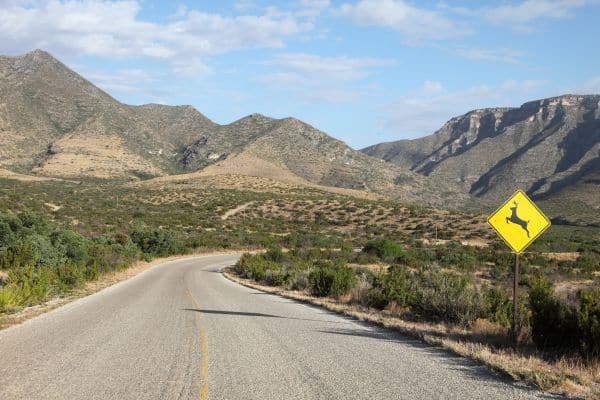
As travelers embark on this journey, they are greeted by the region’s rich fauna. Mule deer gracefully tread across the landscape, while pronghorn antelope showcase their agility.
The elusive gray fox might offer a fleeting glimpse, and the skies and shrubs come alive with the melodies of songbirds, the flutter of mourning doves, and the scurrying of scaled quail. The smaller mammals, though often overlooked, play a crucial role in this intricate ecosystem.
Geologically, the Byway is a marvel. It traces the Capitan Reef of the Permian Basin, a testament to ancient marine life and tectonic movements.
As travelers progress, the plains rise to reveal steep limestone cliffs, punctuated by dry arroyos. These formations hint at the subterranean wonders beneath, housing intricate cave systems like the renowned Carlsbad Caverns and the mysterious Lechugilla Cave, both nestled within the nearby Carlsbad Caverns National Park.
But the Byway isn’t just a silent observer of nature’s wonders. It actively educates its visitors. Strategically placed interpretation stops punctuate the route, offering insights into the multifaceted approach to public land management.
These stops demystify the landscape, explaining the coexistence of oil and gas development with livestock grazing, recreational activities, and conservation efforts. They shed light on the delicate balance of utilizing and preserving this “working landscape.”
Beyond its natural and educational offerings, the Guadalupe Backcountry Byway serves as a conduit for rural tourism, unlocking doors to lesser-known attractions. A network of intersecting roads, both improved and rugged OHV-two track trails, beckons adventurers deeper into public lands.
These paths promise a plethora of activities: from hiking and backpacking to caving, from horseback riding to mountain biking. For those with a penchant for the outdoors, opportunities for primitive camping, nature study, hunting, and more await.
Essential Gear for the Journey in Guadalupe Mountains National Park
Embarking on an adventure in the Guadalupe Mountains National Park, whether it’s traversing the backcountry trails, camping under the stars, or exploring the depths of the Guadalupe Backcountry Byway, requires more than just enthusiasm.
Proper preparation is paramount, and this includes equipping oneself with essential gear tailored to the park’s diverse terrains and challenges.
Appropriate Footwear and Clothing
The varied landscapes of the Guadalupe Mountains, from the arid stretches of the Chihuahuan Desert to the rocky ascents of the Guadalupe Escarpment, demand footwear that’s up to the task.
Invest in a sturdy pair of hiking boots with good ankle support and a grip that can handle both sandy trails and rocky outcrops. Given the temperature fluctuations, especially between day and night, layering is key.
Lightweight, moisture-wicking base layers paired with insulating mid-layers and a waterproof, windproof outer layer will ensure you’re equipped for all weather conditions.
Navigation Tools
While the park’s trails and byways are well-marked, the vastness of the landscape and the potential for sudden weather changes make reliable navigation tools indispensable.
Traditional maps and compasses are lightweight and don’t rely on batteries, making them reliable mainstays. However, in this digital age, a GPS device can be invaluable, offering real-time location tracking and often detailed topographical data.
Whichever tools you choose, ensure you’re familiar with their use and always inform someone of your intended route before heading out.
Water Purification and Storage
In the rugged terrains of the Guadalupe Mountains, water sources can be scarce and unpredictable. Carrying enough water is crucial, but it’s equally important to have the means to purify any water you might find along the way.
Portable water filters or purification tablets can make water from streams or springs safe to drink. As for storage, hydration bladders are convenient for on-the-go sipping, while durable water bottles allow for easy refills.
Remember, in arid environments, it’s recommended to drink at least one gallon of water per day, so plan your storage accordingly.
Emergency Gear
No matter how well you plan, unexpected situations can arise. A comprehensive first aid kit should be at the top of your gear list, equipped with essentials like bandages, antiseptics, pain relievers, and any personal medications. Familiarize yourself with the contents and consider taking a basic first aid course if you haven’t already.
In addition to medical supplies, signaling devices can be lifesavers in emergencies. A whistle is lightweight and can be heard over long distances. Reflective mirrors can signal your location to distant rescuers during the day.
And in this era of connectivity, while cell service might be spotty, carrying a fully charged phone and possibly a portable charger can be beneficial. For those venturing deep into the backcountry, a satellite phone or a personal locator beacon (PLB) can be a worthy investment.
Conclusion
The Guadalupe Mountains National Park is a testament to nature’s grandeur, a place where history, geology, and biodiversity converge to create a unique tapestry of experiences.
From the challenging trails that beckon the intrepid explorer to the serene beauty of the backcountry byway, from the nocturnal wonders of backcountry camping to the thrill of wildlife encounters, every facet of the park offers a distinct adventure. But as with all great adventures, preparation is paramount.
Equipping oneself with the right knowledge and gear ensures not just safety but also a richer, more fulfilling experience. As you set out to explore this magnificent landscape, remember to tread lightly, respect the environment, and immerse yourself fully in the wonders of the Guadalupes.
Here, in this rugged corner of West Texas, nature’s stories await, ready to be discovered, cherished, and passed on.

